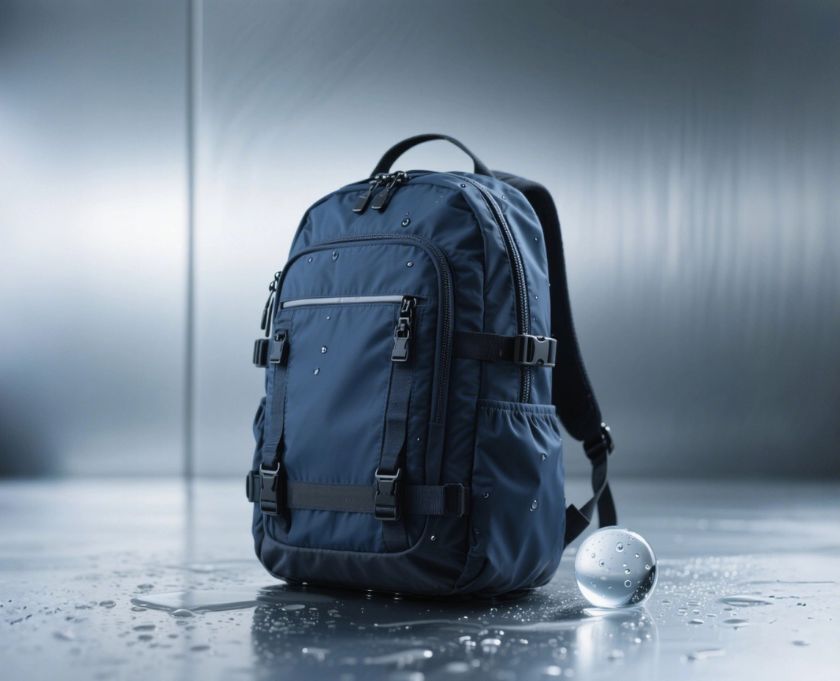Beautiful Plants For Your Interior

Why Backpack Fabric Is More Important Than You Think
When choosing a backpack, most people focus on capacity, features, or style. But one overlooked factor—fabric—can drastically impact your bag’s weight, comfort, durability, and weather performance.
Whether you’re buying for travel, work, hiking, or school, knowing the best backpack fabrics and why they matter helps you make smarter long-term choices.
1. Key Fabric Qualities to Consider
The fabric of a backpack affects:
- Durability: How well it resists tears, abrasion, and wear
- Weight: Lightweight vs. heavy-duty materials
- Water resistance: Protection from rain or spills
- Eco-friendliness: Recycled or organic alternatives
- Flexibility & structure: How it shapes and carries loads
Let’s explore the most common backpack fabrics on the market.
2. Nylon: Lightweight, Strong & Versatile
What It Is:
Nylon is a synthetic fiber known for being lightweight, flexible, and tear-resistant.
Types of Nylon:
- Ripstop Nylon: Woven with reinforced threads to stop tears
- Ballistic Nylon: Dense, rugged, used in tactical and laptop bags
Pros:
- Water-resistant (can be coated for waterproofing)
- Long-lasting with proper care
- Often used in high-end hiking or travel backpacks
Cons:
- Can be shiny or plasticky in look
- Prone to UV fading over time
3. Polyester: Affordable & Color-Resistant
What It Is:
Another synthetic option, polyester is a bit heavier than nylon but more UV resistant and budget-friendly.
Pros:
- Retains color well—great for vibrant designs
- Resistant to shrinking and wrinkling
- Often used in school, casual, and fashion backpacks
Cons:
- Not as tough as nylon in harsh environments
- Less water-resistant unless treated
4. Cordura®: The Gold Standard for Durability
What It Is:
A brand of nylon-based fabric engineered for maximum abrasion resistance.
Used In:
Military gear, adventure backpacks, motorcycle luggage
Pros:
- Exceptionally tough and long-lasting
- Available in different weaves (e.g., 500D, 1000D for strength grades)
- Water- and mildew-resistant
Cons:
- Heavier than regular nylon or polyester
- Higher price point
5. Canvas: Vintage Style Meets Tough Build
What It Is:
Canvas is a cotton-based fabric, sometimes blended with synthetics for extra strength.
Pros:
- Natural look and texture
- Highly durable when waxed or treated
- Popular for urban, vintage, or everyday bags
Cons:
- Heavier and bulkier
- Less water-resistant unless waxed
6. Eco-Friendly Fabrics: Sustainability Meets Function
Types:
- Recycled PET (rPET): Made from recycled plastic bottles
- Organic Cotton: Grown without pesticides
- Recycled Nylon: Upcycled from industrial waste or fishing nets
Pros:
- Lower carbon footprint
- Safe for skin and health
- Found in brands like Patagonia, GOT BAG, Bellroy
Cons:
- Slightly higher cost
- Durability may vary across products
7. How to Choose the Right Fabric for Your Needs
| Use Case | Best Fabric Choice |
|---|---|
| Daily commuting | Nylon or polyester (light + practical) |
| School or college | Polyester (colorful, budget-friendly) |
| Outdoor hiking | Cordura or Ripstop nylon |
| Fashion lifestyle | Canvas or recycled polyester |
| Sustainable travel | rPET or recycled nylon |
8. Care Tips by Fabric Type
- Nylon/Polyester: Wipe clean with a damp cloth; avoid high heat
- Canvas: Spot clean; rewax for water resistance
- Eco fabrics: Use natural soap; avoid bleach
- Always air dry—no machine drying!
FAQs: Best Backpack Fabrics and Why They Matter
1. What’s the most durable backpack fabric?
Cordura nylon, especially in 1000D weave, offers unmatched toughness.
2. Which fabric is best for waterproofing?
Ripstop nylon with a polyurethane or silicone coating is best for water protection.
3. Are eco-friendly backpacks less durable?
Not necessarily—many recycled fabrics now match or exceed traditional materials.
4. Is canvas a good choice for daily use?
Yes, especially if you prefer a structured, fashionable look—just avoid heavy rain.
5. How do I know the fabric quality before buying?
Check product specs for denier rating (D)—higher = tougher. Also look for coatings and brand transparency.
Conclusion: The Fabric You Choose Shapes the Life of Your Backpack
The next time you shop for a backpack, don’t stop at design or size. Think about what it’s made of. Knowing the best backpack fabrics and why they matter empowers you to pick a bag that fits your lifestyle, lasts longer, and (if you choose right) leaves a lighter footprint on the planet.